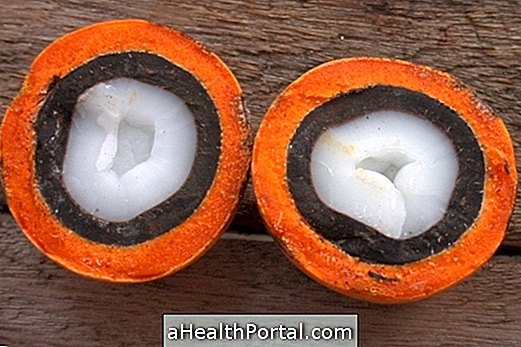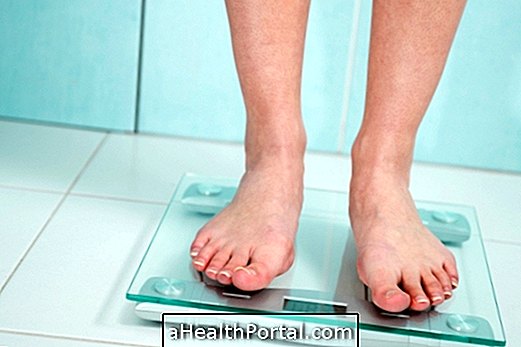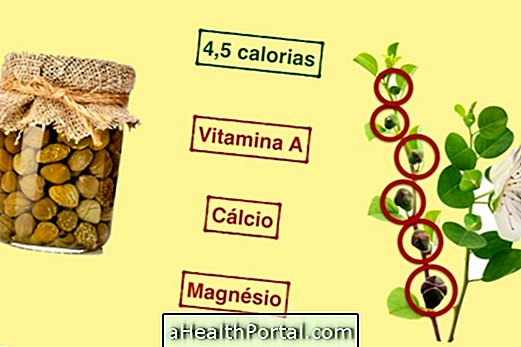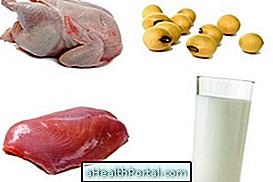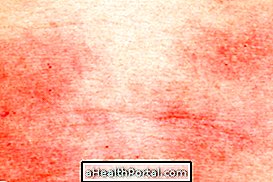Buckwheat is actually a seed, not a cereal like common wheat. It is also known as buckwheat, has a very hard shell and dark pink or brown color, being present mainly in southern Brazil.
The great difference and advantage of buckwheat is that it does not have gluten, and can be used to substitute common flour in preparations of cakes, breads, pies and salted. In addition, due to its high nutritional content, it can also be consumed in place of rice or used to increase salads and soups. See what gluten is and where it is.
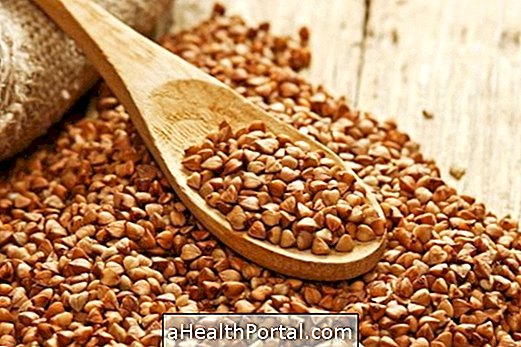
Its main health benefits are:
- Improve blood circulation, being rich in rutin, a nutrient that strengthens blood vessels;
- Reduce the risk of bleeding by strengthening blood vessels;
- Strengthen the muscles and immune system due to its high protein content;
- Prevent diseases and premature aging due to the presence of antioxidants such as flavonoids;
- Improve intestinal transit, due to its fiber content;
- Prevent cardiovascular diseases by having good fats;
- Reduce gas production and poor digestion especially intolerant people, as it does not contain gluten.
These benefits are mainly obtained through the consumption of whole buckwheat, which is richer in fiber, vitamins and minerals. It can be found in the most whole form, as a bran, or in the form of fine flour. Also see how to use rice flour, another gluten-free flour.
Nutritional information
The following table gives nutritional information for 100 g whole buckwheat flour.
| Nutrient | Whole grain | Flour |
| Energy: | 343 kcal | 335 kcal |
| Carbohydrate: | 71.5 g | 70.59 g |
| Protein: | 13.25 g | 12.62 g |
| Fat: | 3.4 g | 3.1 g |
| Fibers: | 10 g | 10 g |
| Magnesium: | 231 mg | 251 mg |
| Potassium: | 460 mg | 577 mg |
| Iron: | 2.2 mg | 4.06 mg |
| Calcium: | 18 mg | 41 mg |
| Selenium: | 8.3 mg | 5.7 mg |
| Zinc: | 2.4 mg | 3.12 mg |
Buckwheat can be used to replace wheat flour or grains such as rice and oats, and can be consumed in the form of porridge or added to preparations such as broths, soups, breads, cakes, pastas and salads.
How to use
To use buckwheat in place of rice, salad or soups, do not need to soak it before cooking. In breads, cakes and pasta recipes, where buckwheat will be used instead of traditional flour, one should use 2 measures of water for 1 measure of wheat.
Here are two recipes with buckwheat.
Saracen Wheat Pancake

Ingredients:
- 250 ml milk
- 1 cup buckwheat flour
- 2 pinches of salt
- 1 tablespoon flaxseed in ¼ cup water
- 3 tablespoons olive oil
Method of preparation:
Beat all the ingredients in the blender and prepare the pancakes in the frying pan. Stuff to taste.
Saracen Wheat Bread
Ingredients:
- 1 + 1/4 cups water
- 3 eggs
- 1/4 cup olive oil
- 1/4 cup of nuts or almonds
- 1 cup buckwheat flour
- 1 cup of rice flour, preferably whole
- 1 tablespoon of xanthan gum
- 1 teaspoon of salt
- 1 tablespoon demerara, brown or coconut sugar
- 1 tablespoon chia seeds or flaxseed
- 1 tablespoon sunflower or sesame seeds
- 1 tablespoon baking powder
Method of preparation:
Beat the water, the eggs and the olive oil in the blender. Add salt, sugar, nuts, xanthan gum, and buckwheat and rice flours. Continue to beat until homogenized. Put the dough into a bowl and add the seeds. Add the yeast and mix with a spoon or spatula. Wait a few minutes for dough to grow before putting it in a greased form. Preheat the oven to 180 ° C for about 35 minutes or until the bread is roasted.
To find out if you need to go on a gluten-free diet, see 7 signs that you may have gluten intolerance.
